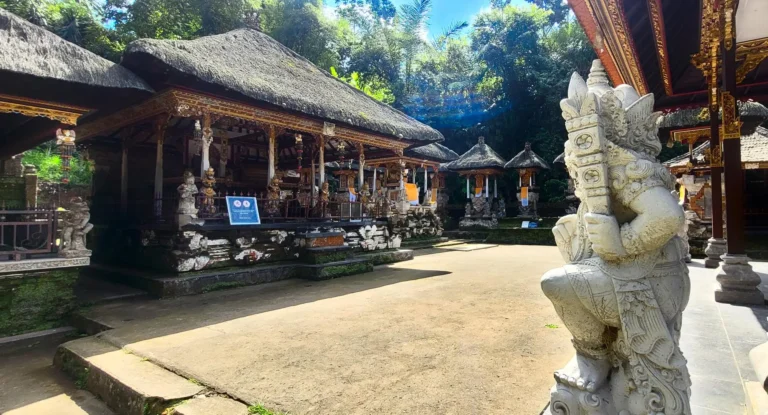
1 WEEK BALI ITINERARY: DISCOVER THE BEST OF THE ISLAND
Here is our 1 week Bali Itinerary to discover what to see in Bali in 7 days: from Hindu temples to green rice fields, from waterfalls to beaches!


When people think of Indonesia, they often think of Bali. But this amazing country is actually made up of thousands of islands, each with its own unique character.
A travel to Indonesia DIY is a great way to experience the country in a different way. You can explore the places that interest you most, and you have the freedom to decide what to do each day.
Here is some essential information about this fascinating country and how to organise a DIY Indonesia trip!
We had a great DIY Indonesia trip, visiting a few islands: Java, Bali, Nusa Penida and the Gili Islands (and a quick passage to Lombok).
Each of these islands has its own unique characteristics and distinctive traditions. In this article, we’ll give you some general info about this amazing Asian country, which might be useful if you’re planning a DIY trip to Indonesia.
We’ll answer questions like ‘How do I get around Indonesia?’ or ‘Is Indonesia dangerous?’ or ‘When’s the best time to go to Indonesia?’.
In Indonesia, the Indonesian currency is the rupiah (IDR), and the exchange rate is about 0.00006 € per 1 IDR (as you can see, the Indonesian currency has extremely low purchasing power). To change your money and get rupiahs, the Indonesian currency, you have three options during your Indonesia DIY trip:
However, you have to be careful about two things, especially if you are planning a DIY trip to Indonesia and will not have ‘assistance’:
Remember that bank fees and exchange rates applied to international transactions may vary between different banks and financial institutions.
The language in Indonesia varies from island to island. In Bali, the main language is Balinese, while in Java, it’s mainly Javanese. English is spoken, especially in tourist areas and shops and banks. In resorts, hotels, restaurants and tourist places on the most visited islands such as Bali, Jakarta and Yogyakarta, staff usually speak English or at least understand the basics.
English in less touristy places: In areas less frequented by tourists, especially in some parts of Java or more remote islands, you may find it difficult to find people who speak English. If you’re in a bind, a translation app on your phone can be a real lifesaver.
Basic expressions: It’s always good to learn a few basic Indonesian phrases, like ‘thank you’ (terima kasih), ‘yes’ (ya), ‘no’ (tidak), and ‘hello’ (halo). These can be useful and appreciated by locals.
Even if you don’t speak the local language and your colleague doesn’t speak English, you can often overcome language barriers with non-verbal communication, such as gestures and smiles. Locals are usually helpful and willing to communicate with foreign visitors.
If you have decided to embark on a DIY trip to Indonesia, the basic information you need to know is that for travellers to Indonesia for tourism purposes with a stay of less than thirty days, a visa is required, which can be obtained on arrival by paying a fee of 500,000 Indonesian rupiah. This visa can be extended for a further 30 days at the local immigration office.
However, it is important to meet two requirements:
The visa can also be purchased at the airport upon arrival, but you will probably be asked to pay in cash, so we suggest you stop and withdraw at an ATM first!
The main airports in Indonesia for international flights are Jakarta on Java and Denpasar on Bali. There are many domestic flights from these airports to other Indonesian islands, including Lombok and Sumatra.
A return flight from Europe to Jakarta costs between around €1,000 and €1,500 and the main airlines you can choose from are Qatar Airways, Emirates, Singapore Airlines and Turkish Airlines, with a stopover. From America, there are flights with a stopover with airlines such as KLM, American Airlines and Cathay Pacific for around €1,500. If you are coming from Australia or Asian countries, there are direct flights to either Denpasar or Jakarta airports. Domestic flights cost between €60 and €150 and we recommend Garuda Airlines.
Some remote islands without airports can only be reached by sea, such as Nusa Penida or the Gili Islands.
There are three main options for sea travel:
Which of these options you choose for your DIY trip to Indonesia will depend on your personal preferences, your budget and where you want to go. For our DIY trip to Indonesia, we opted for a scheduled domestic flight between Java and Bali and between Lombok and Java, and a fast ferry from Bali to the Gili Islands and from the Gili Islands to Lombok.
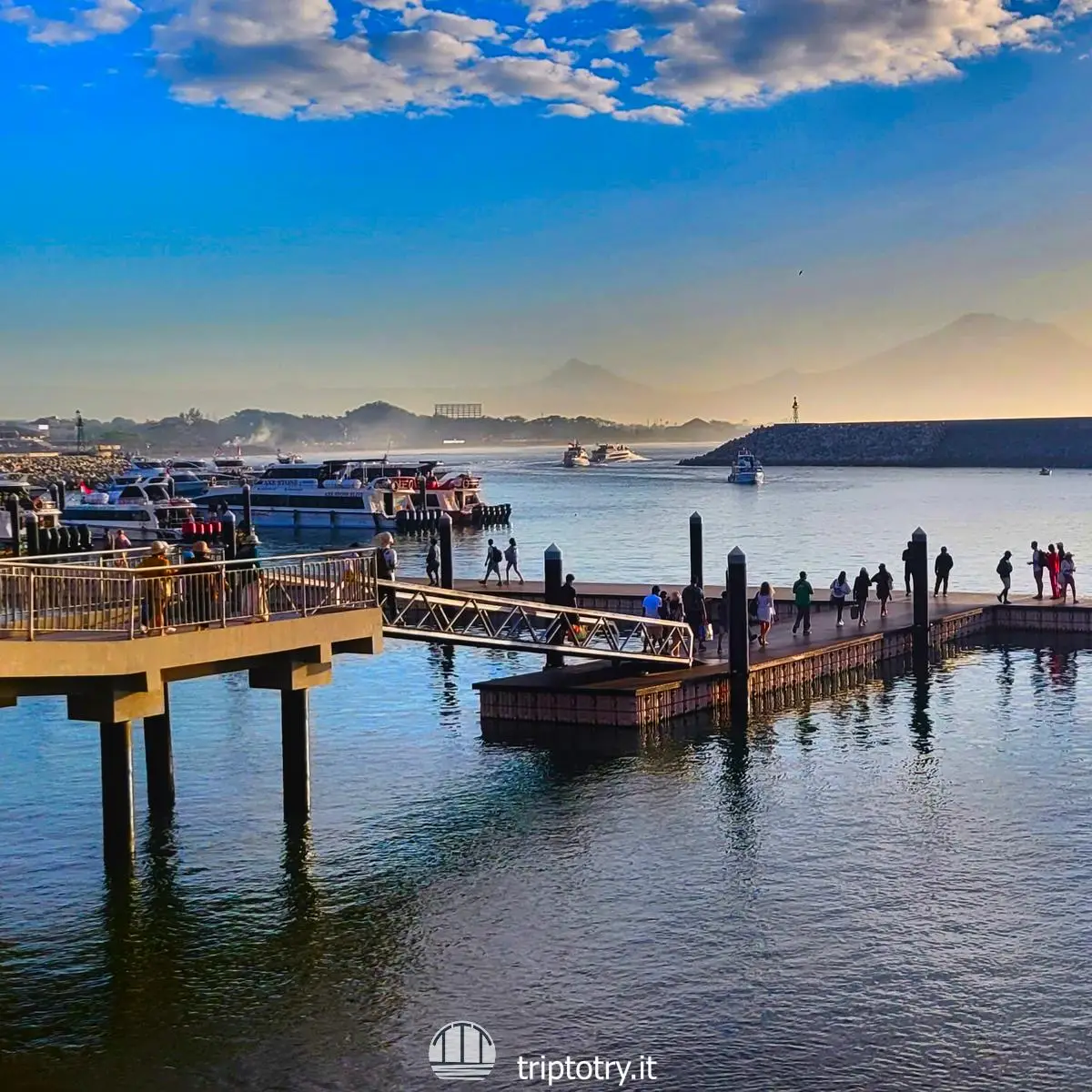
Trip DIY Indonesia: Sanur Port
On the islands of Indonesia, the most popular means of transport used by travellers include cars and scooters. Here are some tips to travel to Indonesia on the choice of means of transport in different situations on a do-it-yourself trip to Indonesia:
Driving in Indonesia can be a unique experience, but it is important to be aware of some local considerations and rules. Here are some important Indonesia DIY travel tips:
In general, driving in the country can be a fascinating experience to explore the islands and enjoy the full experience of a DIY trip to Indonesia, but it is important to be informed and to drive carefully, especially in areas with heavy traffic or less than ideal road conditions.
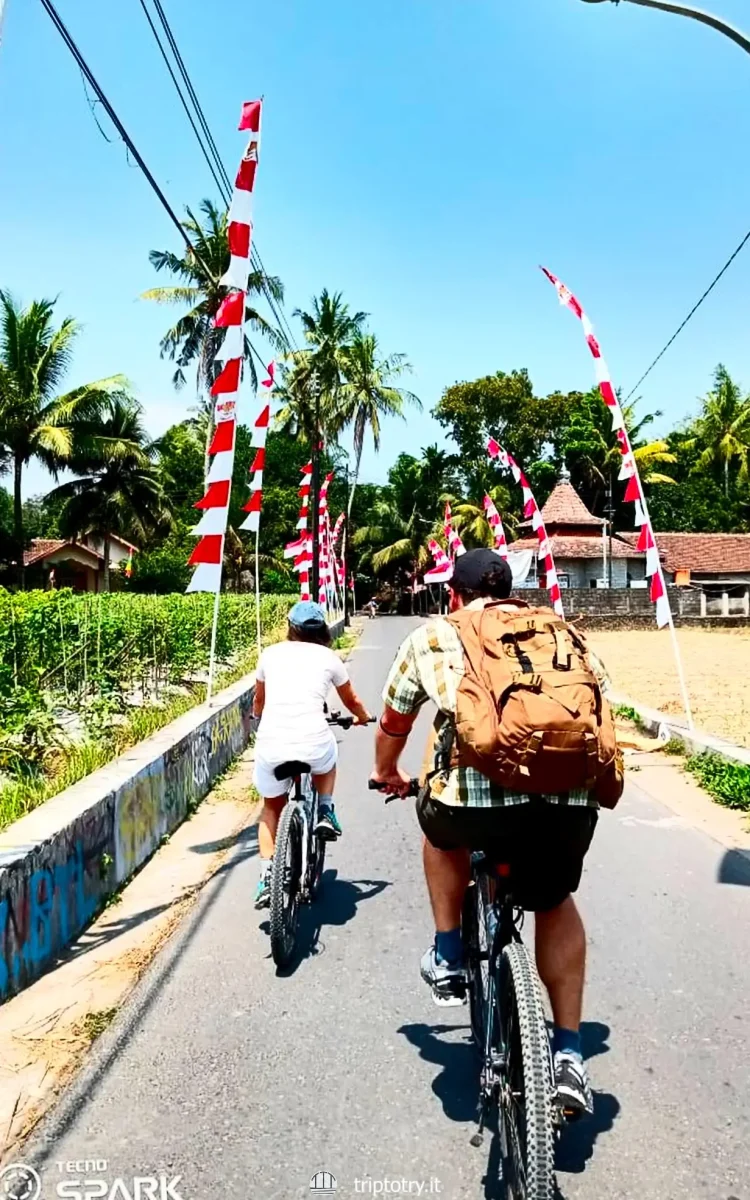
Cycling in the villages
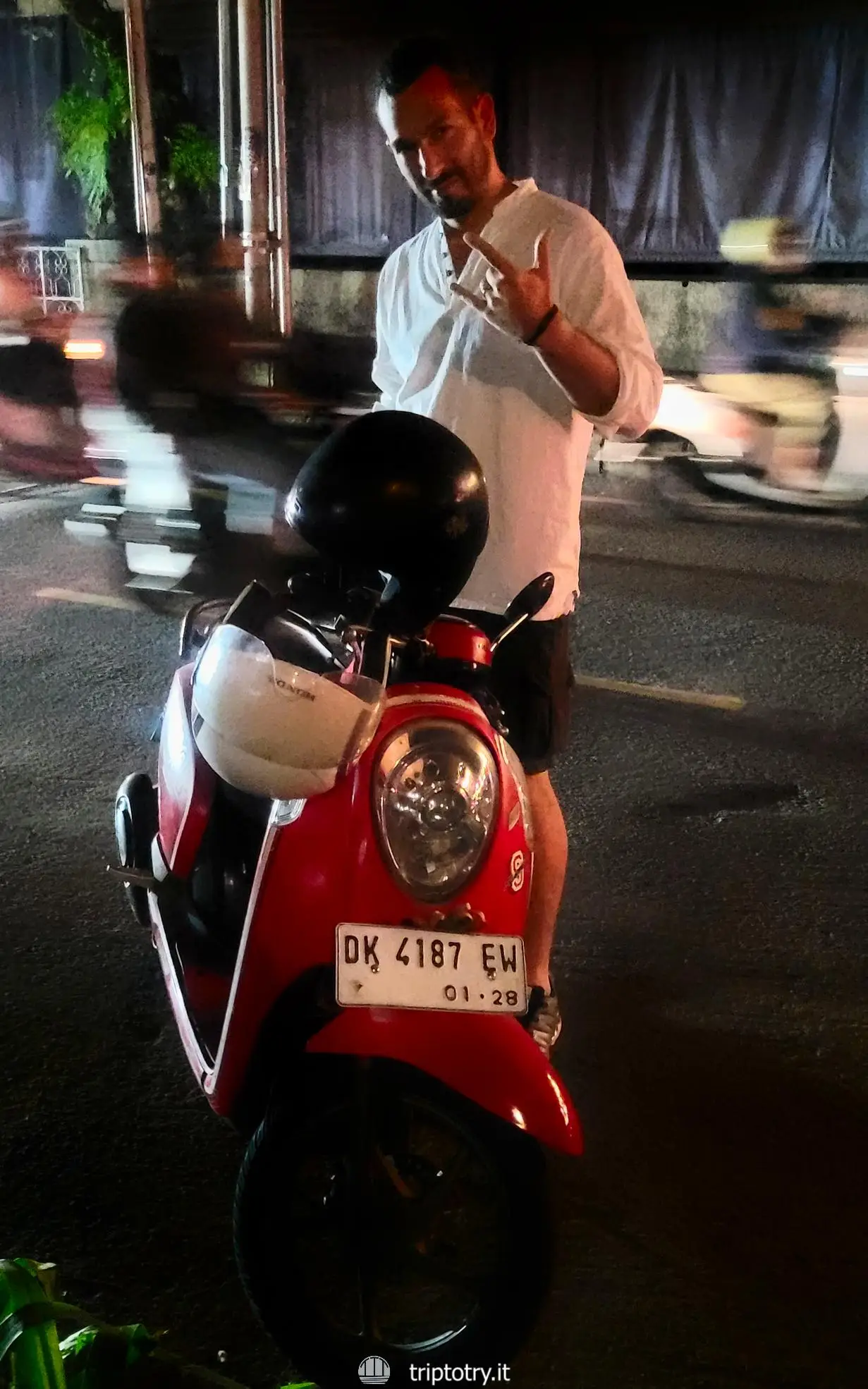
By scooter in the center of Ubud
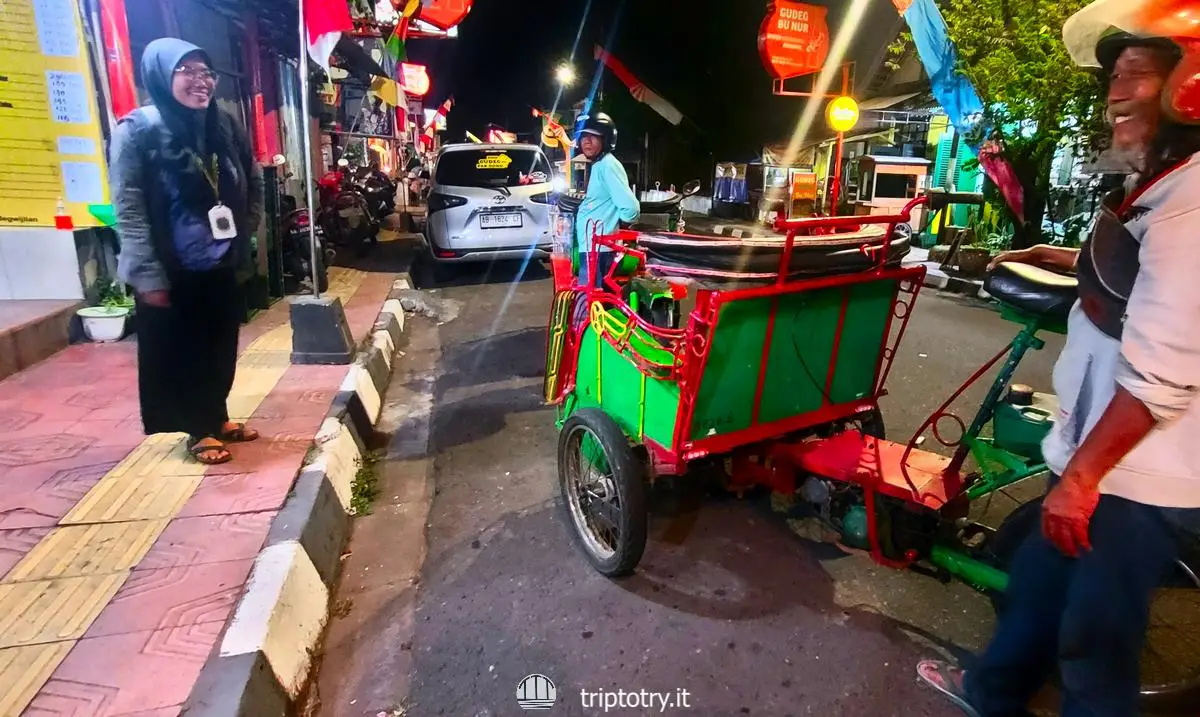
In becak in Yogyakarta
The health situation in Indonesia can vary greatly depending on the regions and islands you visit. Here is some useful tips to travel to Indonesia in the best possible way:

Here is our 1 week Bali Itinerary to discover what to see in Bali in 7 days: from Hindu temples to green rice fields, from waterfalls to beaches!
Indonesia’s climate can vary a lot depending on where you go. Here are some things to know about the climate in Indonesia:
As you can see, the climate in Indonesia varies a lot depending on which island you decide to visit. But if you’re planning a DIY Indonesia trip and you’re going to be in the southern islands, you’ll find the weather is pretty similar everywhere.
April is a good time to visit Bali and other islands even though it’s the rainy season because there aren’t many tourists and the rain is short-lived.
In September, the weather in Indonesia is at its most intense rainy season.
In general, we can say that the answer to the question “Indonesia when to go?” is that the period between May and August is the one with the greatest probability of finding excellent weather in Indonesia.
Indonesia is a predominantly Muslim country, with the exception of Bali, which is a Hindu island. It’s important to respect the various religions during a DIY trip to Indonesia.
If you’re travelling to islands like Java, it’s a good idea to plan your clothing in a way that is not offensive to Muslim culture. For instance, it’s best to avoid tank tops or super tight shorts in public or places of worship. A short-sleeved T-shirt and a pair of knee-length shorts are perfect.
Similarly, you’ll probably struggle to find alcoholic beverages on Muslim islands.
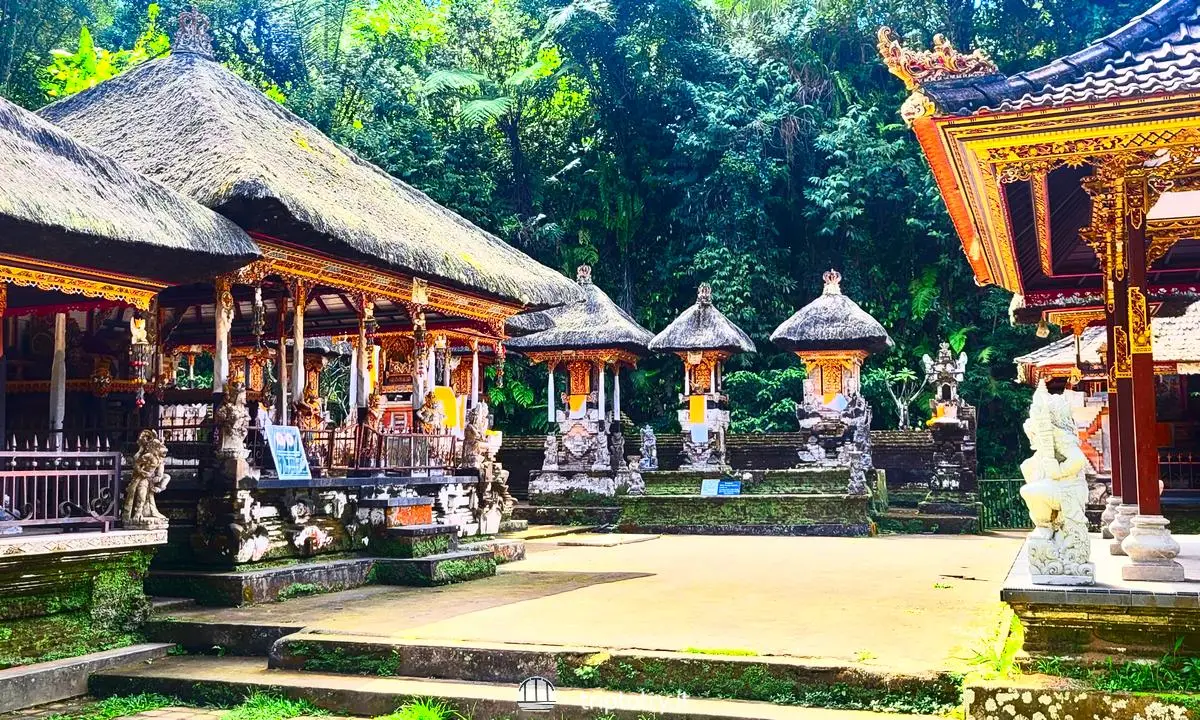
Indonesia DIY trip: hindu temple in Bali
Indonesian cuisine is full of delicious flavours and dishes that are worth trying during your DIY Indonesia trip. Here are some typical dishes and tips for exploring the local cuisine:
If you want to experience authentic Indonesian cuisine, we recommend seeking out the local warung, where you can enjoy traditional dishes at affordable prices.
If, on the other hand, you are in the mood for a more varied cuisine, you won’t struggle to find restaurants of all kinds, including Indonesian ones that, in addition to typical dishes, offer reinterpretations of their recipes and international dishes such as burgers, pizza or grilled meat or fish dishes. Our advice is always to try the traditional dishes in order to fully enjoy the local culture (watch out for the chilli in this location!) and fully experience a DIY trip to Indonesia.

DIY Indonesia trip: Dinner in an international restaurant in Bali
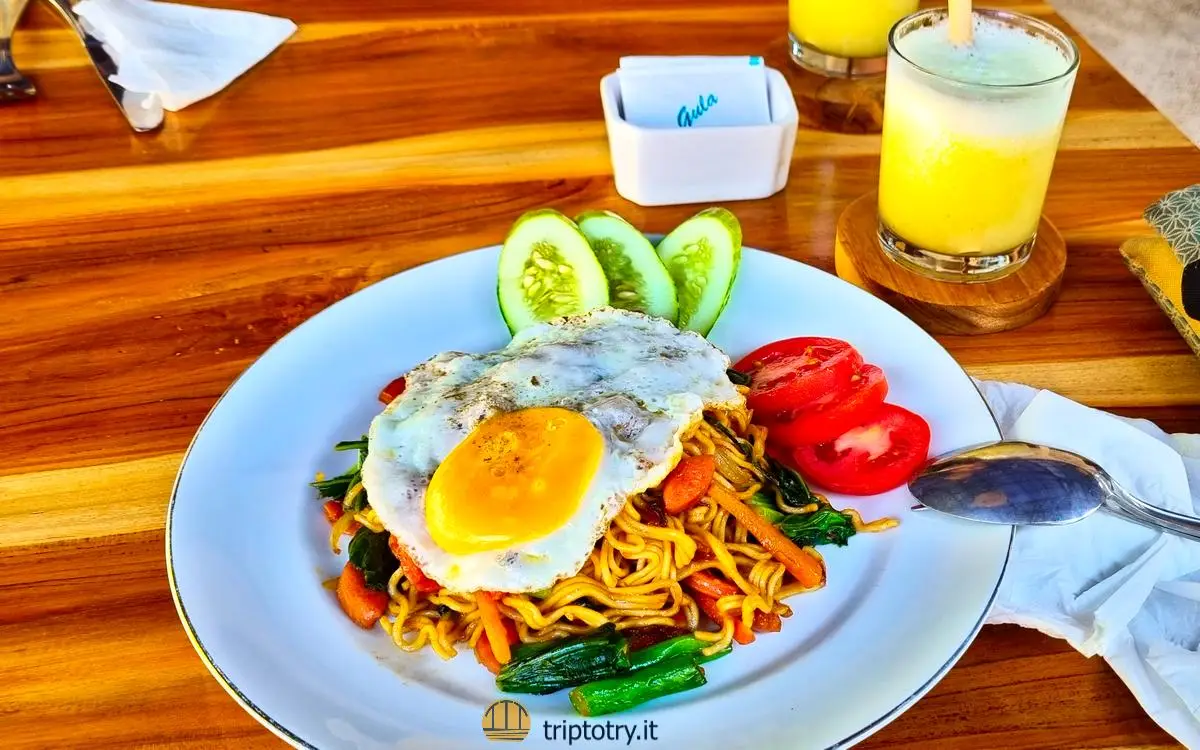
DIY Indonesia Trip: Breakfast of Champions with Mie Goreng!
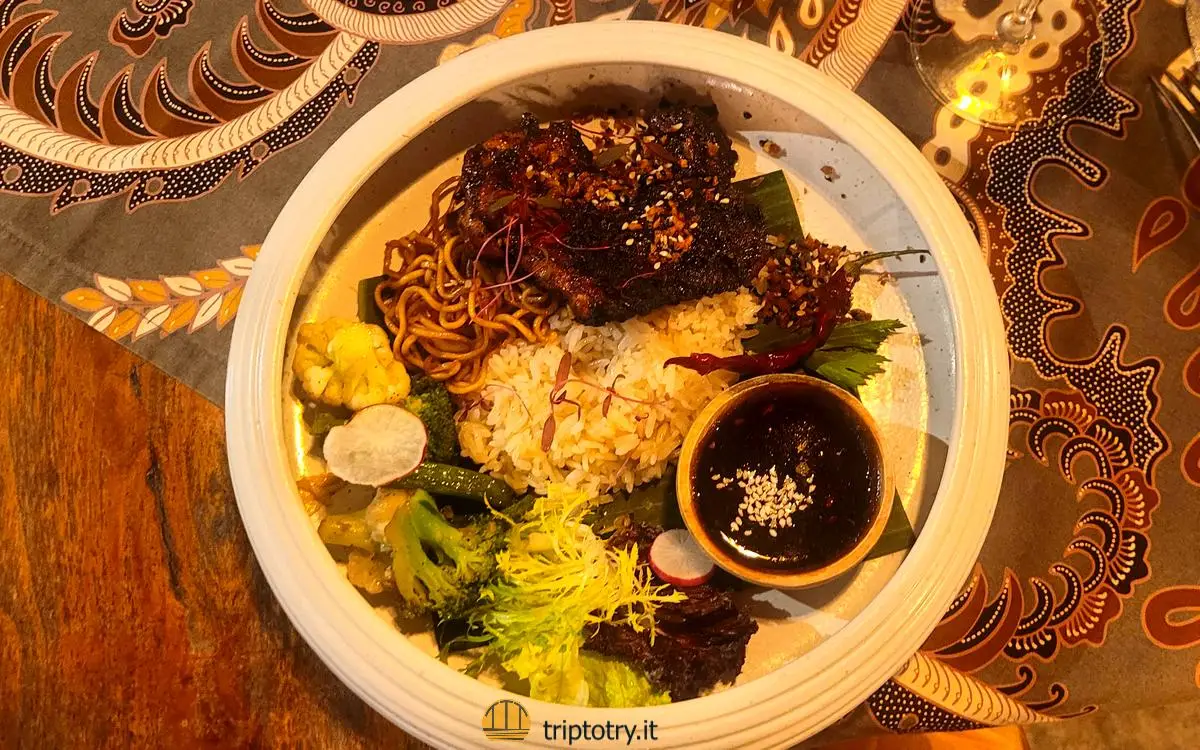
DIY trip to Indonesia: Nasi Campur
From what we saw on our DIY Indonesia trip, Java was the cheapest island, while the Gili islands were more ‘expensive’, with Bali falling in between.
Either way, the cost of living in Indonesia is very low, here are some examples:
However, there are some things that cost more than in Europe, such as wine and cigarettes: for example, a bottle of wine costs a minimum of 25-30 euro.
The cost of a DIY trip to Indonesia can vary considerably, especially depending on the facilities where you decide to stay, but you can take an average cost of €3,000 per person for a fortnight as a reference.
Many people, and especially those planning a DIY trip to Indonesia, ask whether it’s safe to visit. Various sites, including that of the Foreign Office, have lots of information about safety in Indonesia.
Our answer is no, but we haven’t visited all of Indonesia, so we can only speak for Java, Bali, Nusa Penida, Lombok and the Gili Islands.
In general, we’ve always felt safe. We’ve never found ourselves in strange situations or situations that made us feel uneasy.
Obviously, as in all countries, you have to take the usual precautions, like not wearing flashy jewellery, not walking at night in the outskirts of cities or in unpopulated areas and not leaving anything in sight if you have your car.
So, to answer the question ‘Is Indonesia dangerous?’ the answer is no, but just be careful on your DIY trip to Indonesia!
With this article we hope we have given you some useful general information for planning your DIY trip to Indonesia, and if you want to go deeper, we recommend you read the related articles too! Planning a do-it-yourself trip to Indonesia can be a bit complicated, especially if you decide to visit several islands and if you need any further information please do not hesitate to contact us. We wish you a good read and as always… trip to try!

© Trip To Try - This website idea comes from Barbara and Riccardo and their love for travel to bring home new amazing experience from other cultures and beautiful places around the world. We hope you enjoy our site and our style!
Feel free to Contact Us to share with us your opinion and suggestion!
Privacy - Sitemap